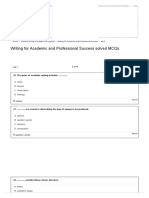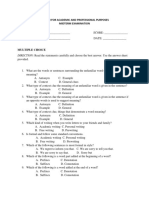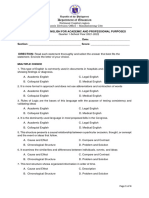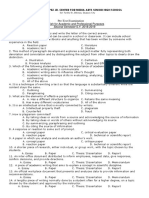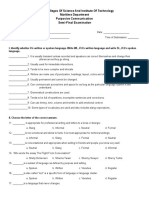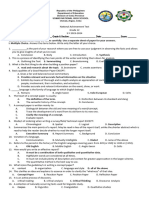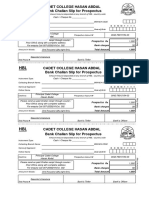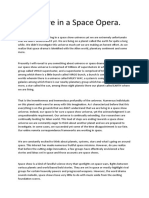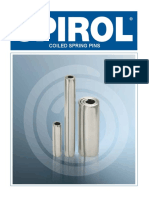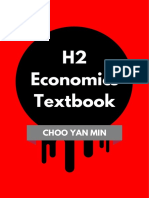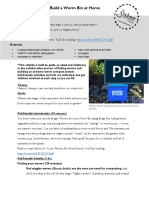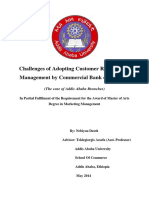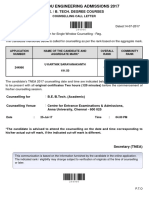0% found this document useful (0 votes)
27 views16 pagesEapp Questionnaire
The document contains a series of multiple-choice questions for Prelim, Midterm, and Semi-finals Examinations in EAPP-12 at BIT International College, covering topics such as academic writing, critique, citation formats, and grammar. Each section includes questions designed to assess students' understanding of academic concepts and writing skills. The exams are structured to evaluate knowledge on various aspects of English for Academic and Professional Purposes.
Uploaded by
azidotyCopyright
© © All Rights Reserved
We take content rights seriously. If you suspect this is your content, claim it here.
Available Formats
Download as DOCX, PDF, TXT or read online on Scribd
0% found this document useful (0 votes)
27 views16 pagesEapp Questionnaire
The document contains a series of multiple-choice questions for Prelim, Midterm, and Semi-finals Examinations in EAPP-12 at BIT International College, covering topics such as academic writing, critique, citation formats, and grammar. Each section includes questions designed to assess students' understanding of academic concepts and writing skills. The exams are structured to evaluate knowledge on various aspects of English for Academic and Professional Purposes.
Uploaded by
azidotyCopyright
© © All Rights Reserved
We take content rights seriously. If you suspect this is your content, claim it here.
Available Formats
Download as DOCX, PDF, TXT or read online on Scribd
/ 16


